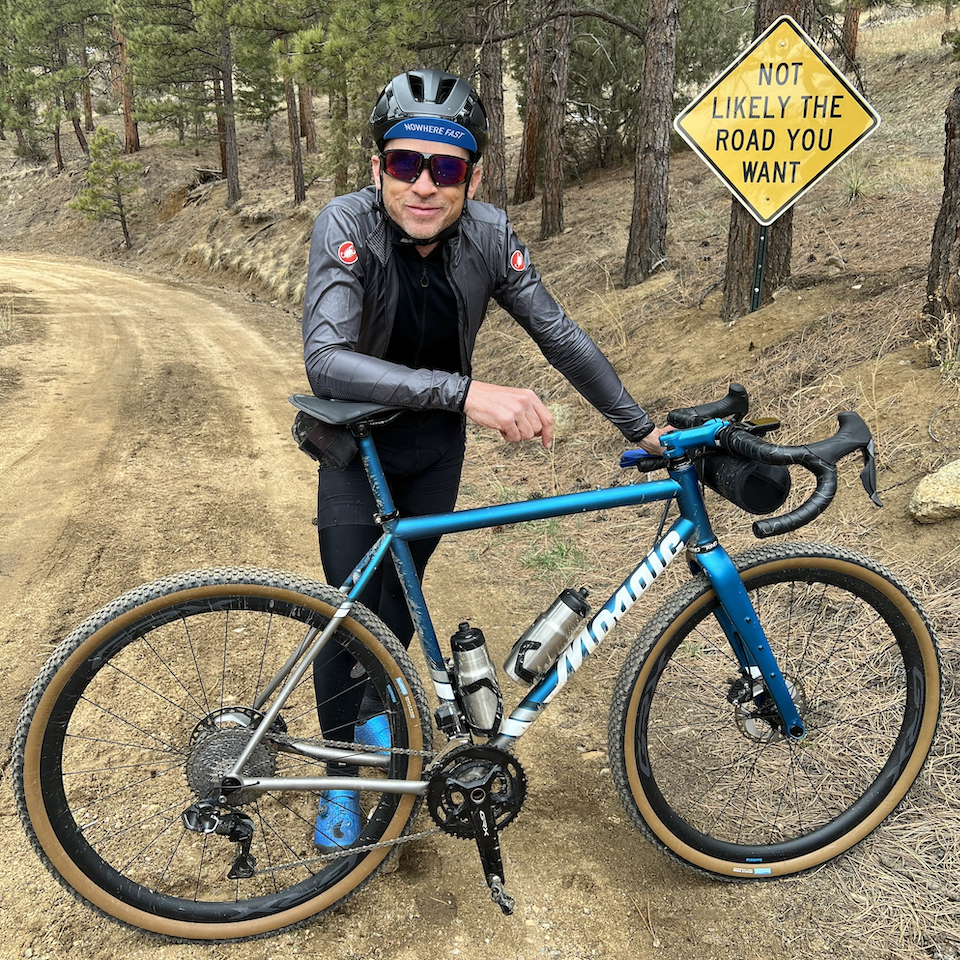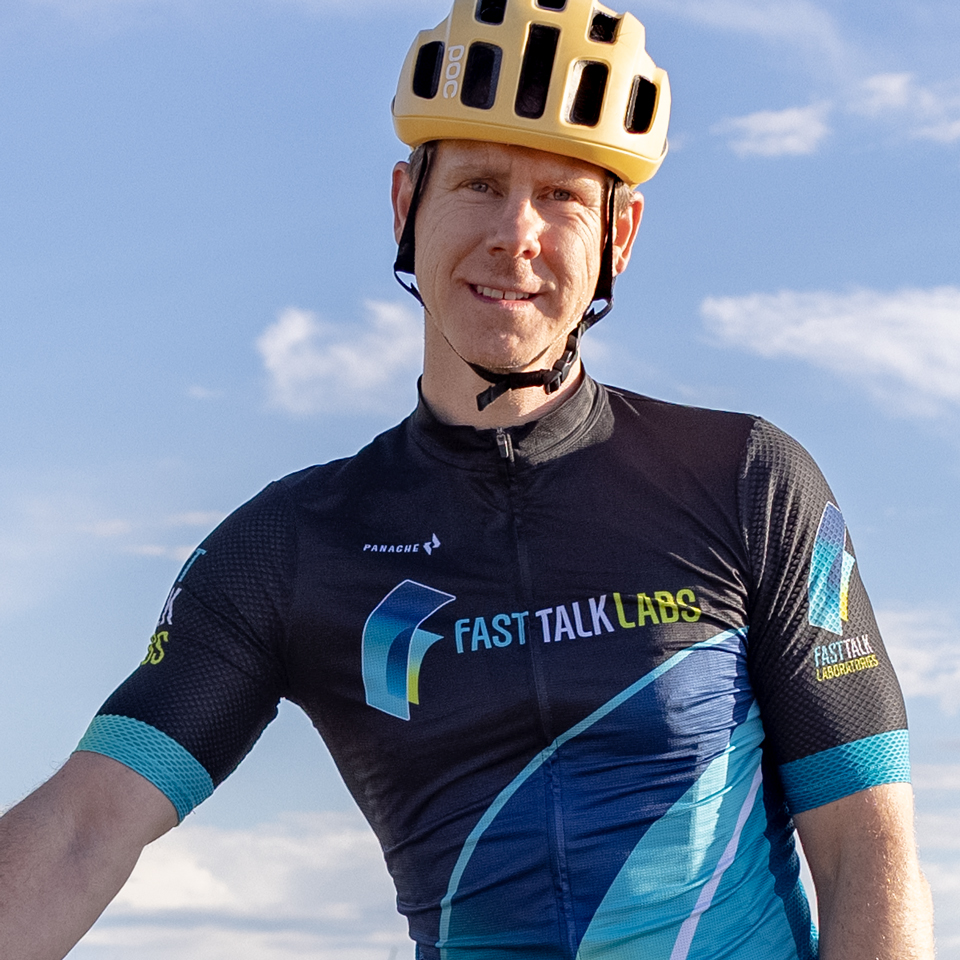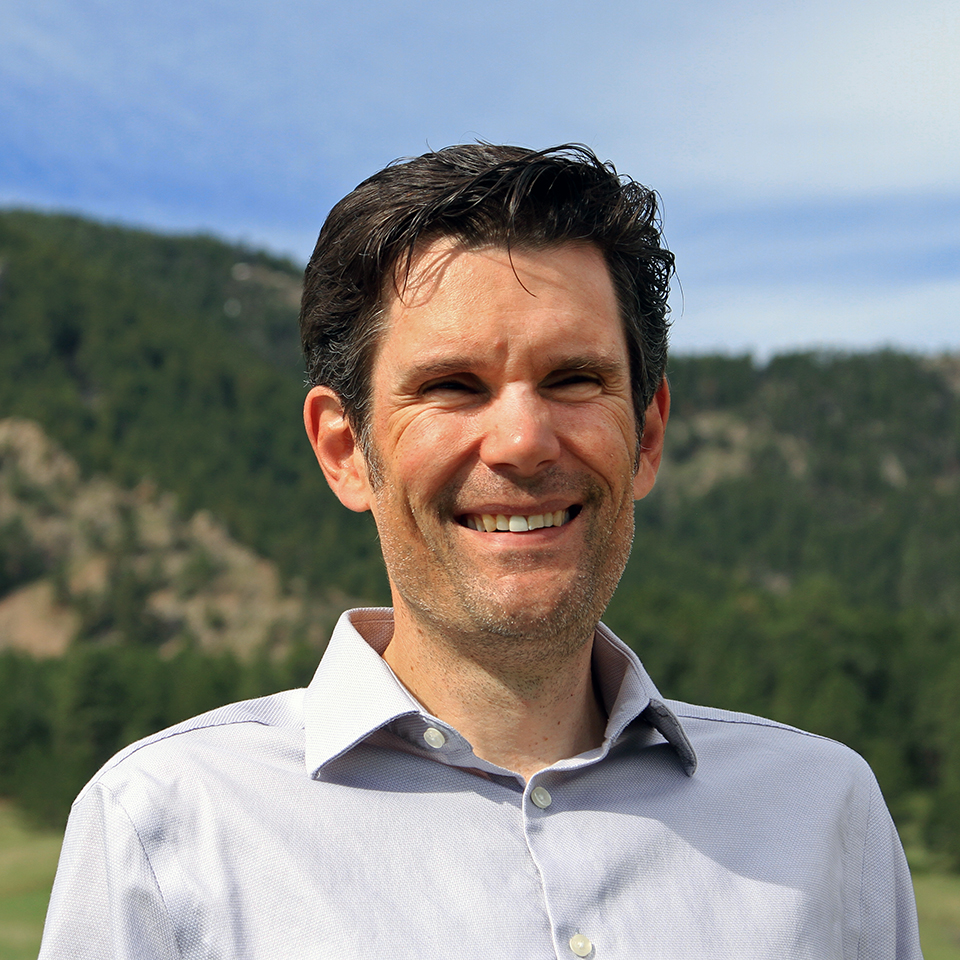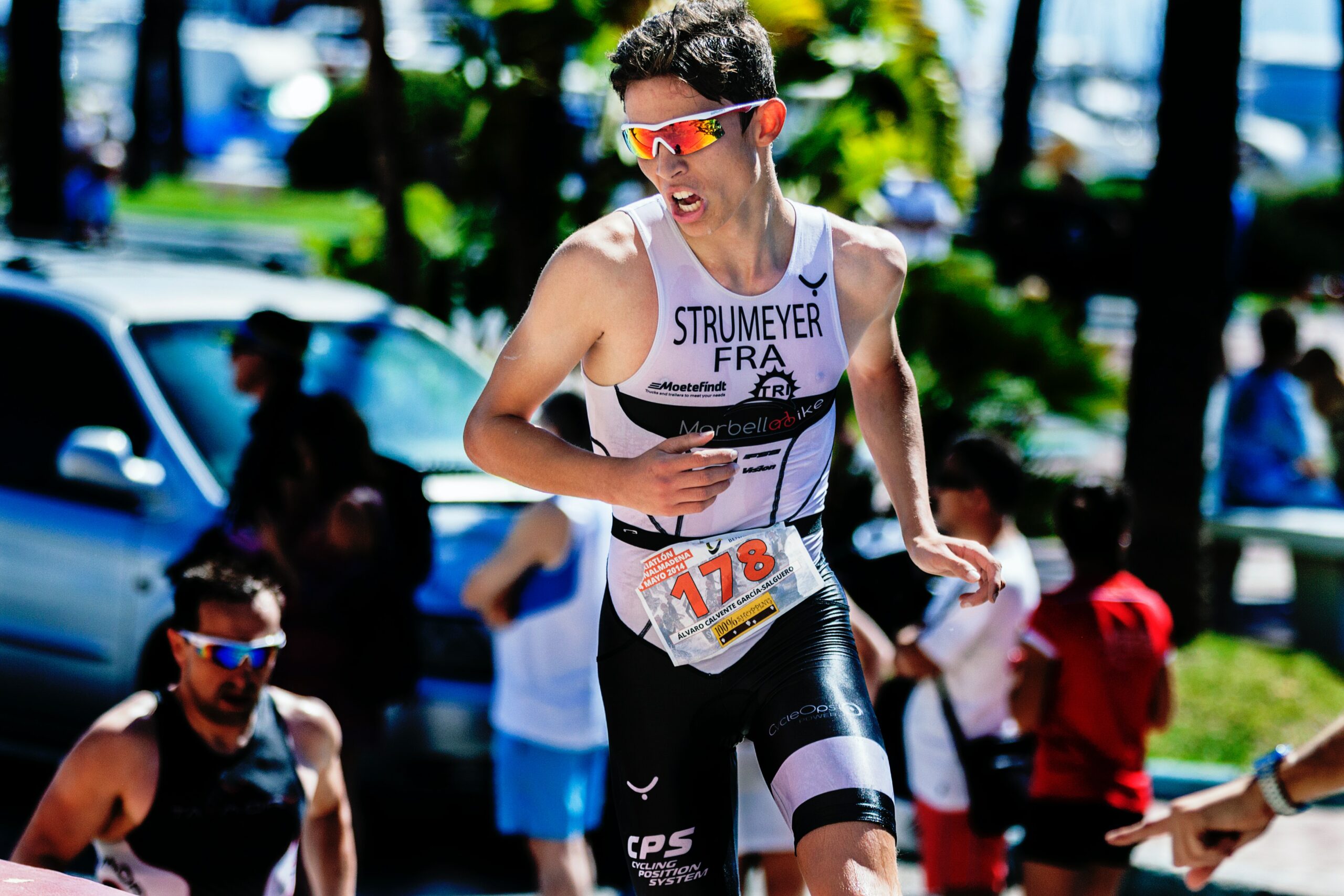
 Exercise in the Heat Pathway
Exercise in the Heat Pathway
Experts in this Pathway
What You’ll Learn
Welcome to the Exercise in the Heat Pathway.
Hot temperatures impact every part of human physiology. For endurance athletes, exercising in hot weather leads to higher heart rates, core temperatures, sweat rates, and perceived discomfort. That discomfort is key: It is our brain’s signal to force us to slow down so that we can complete the exercise without our body catastrophically collapsing.
In this guide to exercising in hot weather, you will learn how your physiology and psychology are affected by heat. We will go beyond looking at heart rate or sweat rate as “black box” numbers; instead, we’ll study the underlying physiology that drives these changes in the heat. You will learn that, while heat can impair performance, it’s something you can prepare for rather than fear.
This Pathway features a mixture of experts and formats, including podcasts, workshops, and webinars with Dr. Stephen Cheung, an international authority in thermal physiology. You will also learn how leading scientists and coaches like Rob Pickels, Lindsay Golich, and Dr. Stephen Seiler manage heat indoors and outdoors. Our team of Coach Trevor Connor and Coach Ryan Kohler also address how to manage heat with a solid race-day nutrition plan.
Busting myths about the effects of heat
Athletes have been performing in hot conditions for millennia. Thus, myths and misinformation exist about how heat stress affects us and how best to manage it.
Have you heard how air conditioners cause you to catch a cold? Myth! Do you belief you must sleep with all the windows shut even in sweltering summer heat? Don’t do it! Do you panic if you can’t hydrate with your favorite sports drink? Do you insist on not drinking any water while riding in order to gain mental toughness? We’ll bust those myths too.
In order to grasp the basics of heat’s impact on physiology and performance, we’ll start by tackling some of the most pervasive myths with a clear scientific eye.
- Are certain riders “built” for certain types of weather, or is it more a matter of history, habit, and mentality?
- Is fatigue in the heat a result of physiological or psychological factors, or a bit of both? Can you trick yourself or use mental strategies to perform better in the heat?
- Should you pour water on yourself or drink it for maximal cooling benefit?
- Do you need to match your sports drink to the level of salt concentration in your sweat?
In this podcast, Dr. Stephen Cheung tackles these questions and many others to decipher which are myths and which are facts. You’ll not only hear some myths getting busted, you’ll gain a deeper understanding of heat management strategies that will be explored in greater detail later in this pathway. Click below to listen to this podcast.
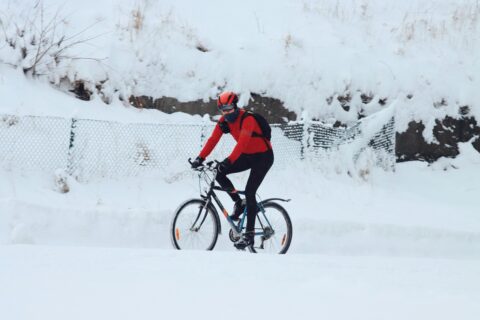
Busting Myths About Riding in the Heat and Cold, with Dr. Stephen Cheung
What is heat?
In this podcast, Rob Pickels, a physiologist and researcher with Pearl Izumi, discusses the basics of heat and how it impacts physiology and performance. How important is hydration during hot weather riding? What’s the idea behind heat adaptation, and how effective is it?
You’ll also gain insight into the complex interaction between the brain and the body, which determines how hard and how long you can ride in hot weather. Click below to listen to this podcast.

Managing Heat, with Rob Pickels
“Between 20 and 25 percent of your energy goes toward putting force to the pedals. And the rest of those calories that you’re burning, they’re being lost as heat, which becomes more or less difficult to manage depending on the environment that you’re in.”
Rob Pickels
The truth about cramps
Cramping is like a hidden predator. You never know when it might come out of nowhere, ambushing you and turning your greatest performance into abject agony. For many years, cramping had been assumed to be due to dehydration or loss of electrolytes, exacerbated by greater sweating in the heat. But is it as simple as that?
New research is bringing out other potential mechanisms for cramping, especially from fatigue within the muscles themselves. This “altered neuromuscular control theory” relates to local imbalances between the nerves signaling the muscle to fire and the sensors within the muscles regulating relaxation, resulting in sudden and involuntary strong contractions that results in spasms and intense pain.
This podcast dives deep into the science and myths surrounding cramping, featuring an interview with sports physician Dr. Martin Schwellnus, the world authority on cramping in sports.
Are some people more prone to cramping than others? Is cramping a sign of poor fitness? What does pickle juice do for cramps? What can you do if you experience a cramp mid-ride? Click below to listen to this podcast.
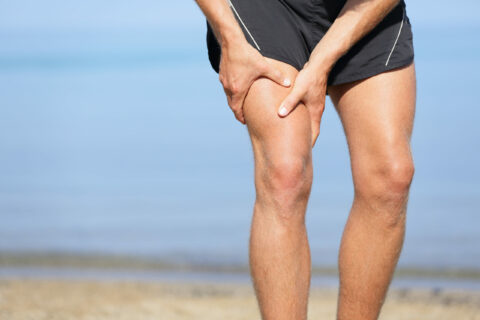
Cramping Myths Debunked
Managing Heat Indoors
Ironically, one of the most challenging times to combat heat stress is in the depths of winter, when many of us ride indoors. Unless we ride in an uninsulated garage, the 22-24°C room temperature that we find comfortable indoors is far warmer than the ideal. That ideal temperature, ~11°C, was established in a classic 1997 study by Galloway and Maughan, and was specific to indoor riding conditions which prolonged study participants’ tolerance to a hard workload.
In this section of the Pathway, we’ll look at the peculiarities of heat stress indoors. How can we keep cool while on the road to nowhere?
Managing heat during indoor workouts
When we ride indoors, not only is the room often warm, but there is often minimal airflow. In this workshop, Dr. Stephen Seiler explores the importance of adequate airflow and the role it plays in heat management. To borrow the classic real estate slogan—“location, location, location”—the absolute key for a quality indoor training setup is “ventilation, ventilation, ventilation.” Click below to watch this workshop.
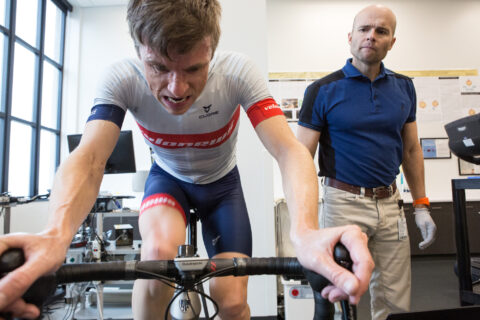
How to Manage Heat During Indoor Workouts
For further detail about the critical importance of airflow in heat management, Dr. Stephen Cheung takes us through the scientific studies highlighting the importance of adequate ventilation. He examines:
- The classic Galloway and Maughan study from 1997 showing that typical indoor temperatures of ~21°C lead to significant heat stress and performance impairment when there is no air flow
- A study showing that with higher airflow indoors there is less physiological impairment and better performance
- How inadequate airflow might overestimate the efficacy of heat management interventions like pre-cooling
- Whether we can do hard intervals equally well across a range of temperatures when there is adequate airflow
This workshop will provide important insights for managing heat indoors and outdoors. You will see that different disciplines of cycling with different potential for airflow may be differently affected by heat stress, even if the actual air temperature is equal. You’ll also see the difference between physiology and performance, and how you might still be able to achieve a desired performance even with impaired physiology. Click below to watch this video.
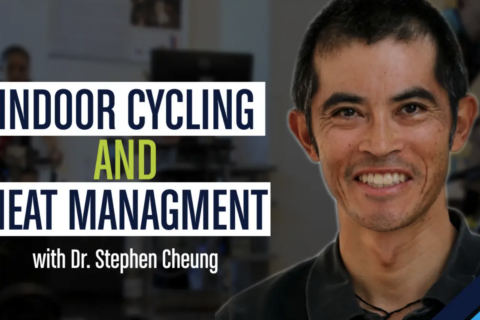
Indoor Cycling and Heat Management with Dr. Stephen Cheung
In this wide-ranging webinar, Dr. Stephen Cheung, Head Coach Ryan Kohler, and Trevor Connor cover heat stress along with the unique nature of indoor training. They start by re-examining the classic studies demonstrating the impact of heat and inadequate airflow on indoor cycling performance in even greater detail—in case you remain unconvinced that your training space would improve with quality fans.
Next, they examine how to monitor your thermal status while riding, and the potential for new non-invasive sensors to provide real-time core and skin temperature feedback to your bike computer or phone.
As a bonus, the webinar also includes references to our Cycling Interval Training Pathway, with a discussion about some of the unique neuromuscular differences between steady-state and variable intervals. It finishes with two of Dr. Cheung’s favorite indoor interval workouts. Click below to watch this webinar.
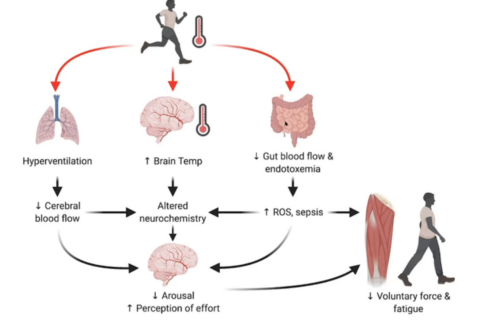
Your Winter Guide to Indoor Cycling, with Dr. Stephen Cheung
Managing Heat Outside
Now that you understand how heat impacts your physiology and how to manage it while training indoors, let’s apply that knowledge on the road and in your big events.
One of the most beneficial things you can do to prepare for heat outdoors is to perform heat acclimation, which we’ll highlight in this section. We will also discuss the importance of hydration, tempered with an analysis of how much we need to schedule our drinking during hot events. We will then put it all together into best practices so that you can achieve your best performance no matter how hot the day.
How to heat adapt
A carefully planned program of heat adaptation, consisting of one to two weeks of gradual exposure to heat, is the single best systematic way to get ready for racing in the heat. But the devil is in the details, and this is where a lot of athletes may “overcook” themselves or fall to myths.
In this workshop, Dr. Stephen Cheung lays out the science of heat adaptation based on his 30 years in the field. Most importantly, he details the practical implementation of how athletes can design a heat adaptation protocol and fit it into their periodization and race prep.
To do so, he shares an example of his work with Amber Neben prior to her gold medal ride at the time trial world championships in Qatar in 2016. Click below to learn more.
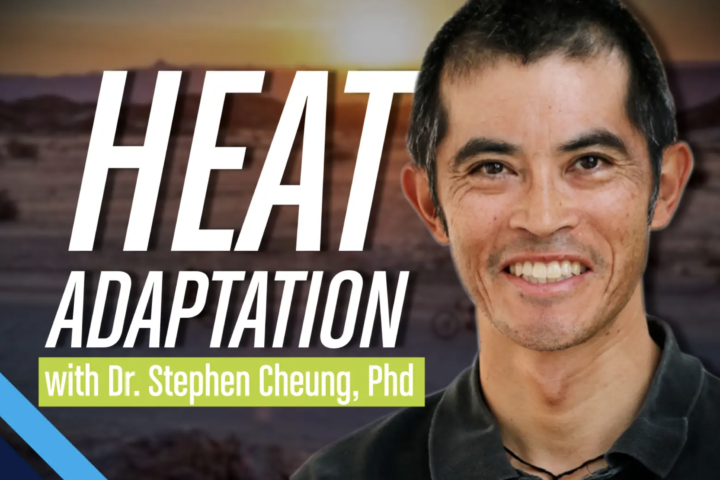
Exploring Heat Adaptation Methods
The practice of heat adaptation
There’s a lot of theory and science behind heat adaptation. At the end of the day, however, an athlete and his or her team has to put it into practice. Coach Lindsay Golich gives us insight into how she works with USA Cycling and USA Triathlon to implement heat acclimation in the elite athletes she works with.
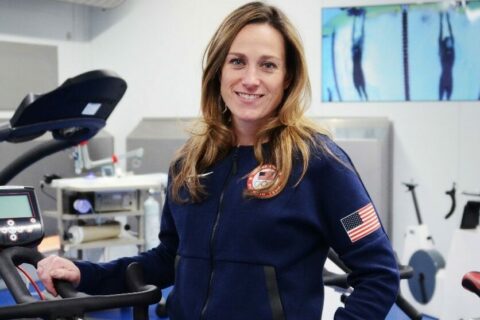
Q&A on Heat Acclimatization, Sweat Rates, Altitude Effects, FTP Testing, and Fasted Training, with Lindsay Golich
How much should you drink?
In addition to heat adaptation, proper hydration is another critical component of heat management. Do we need to plan out and be systematic about a scheduled drinking regimen, or can we just let our thirst guide us? Dr. Stephen Cheung walks us through the pros and cons of each approach, and gives us practical advice on how to use both methods.
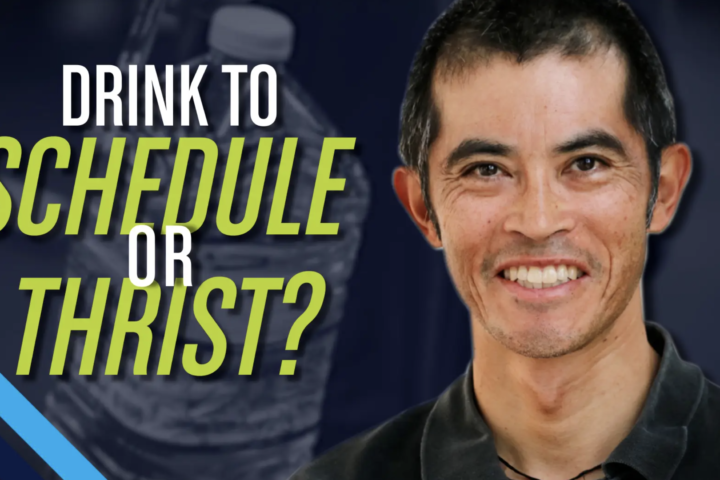
Should You Drink to a Schedule or to Thirst?
How nutrition impacts performance in the heat
Along with hydration, proper race-day nutrition is a critical component of performing at your best in the heat. In this series of webinars, Head Coach Ryan Kohler and Trevor Connor take you step by step through developing your own personalized race-day sports nutrition plan. You will not only dig into the science underlying sports nutrition, but come out with homework and an actionable plan that is individualized to you.
Assess your event
You wouldn’t physically train for a crit the same way you’d train for a stage race. In the same way, your race-day nutrition will depend heavily on the type of event you’re preparing for. Set the stage by breaking down the nutritional needs of your event.
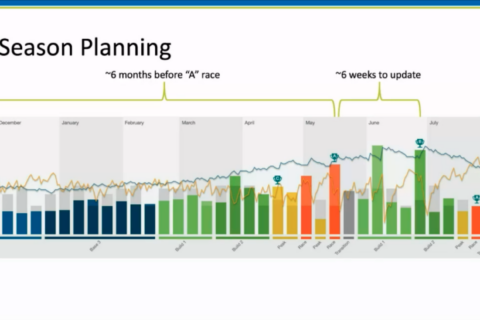
How to Create a Race-Day Sports Nutrition Plan, Part 1
Using Leadville 100 as an example
Head Coach Ryan Kohler dives deeper into assessing an event’s nutritional needs as he dissects the Leadville 100 mountain bike race and some of his published research on the subject.

How to Create a Race-Day Sports Nutrition Plan, Part 2
Fill your feedbag
Finally, fine tune the details of your nutrition plan(s)—yes, plan A, B, and even a “Disaster Recovery Plan.”
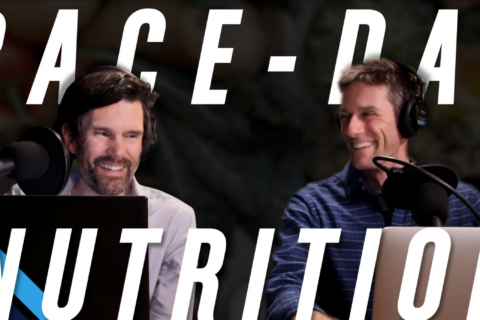
How to Create a Race-Day Sports Nutrition Plan, Part 3
Compete in the heat!
Dr. Stephen Cheung summarizes the lessons learned throughout this Pathway, and helps you understand best practices for performing in the heat.
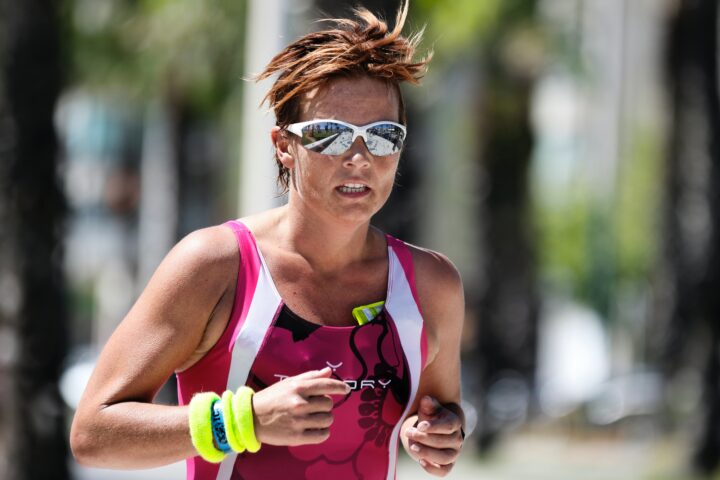
Best Practices for Racing in the Heat
Join the conversation
Do you have additional questions or heat management tips that you would like to share with our endurance community? Head over to the Forum and post there to collaborate.
STILL NEED HELP?
Heat has a profound impact on performance, and safety, at endurance events. A proper understanding of those effects, as well as the best and safest ways to heat adapt is critical to beating the heat. If you still need help, schedule a free consultation with us and we will develop a path forward that is individualized for you.
